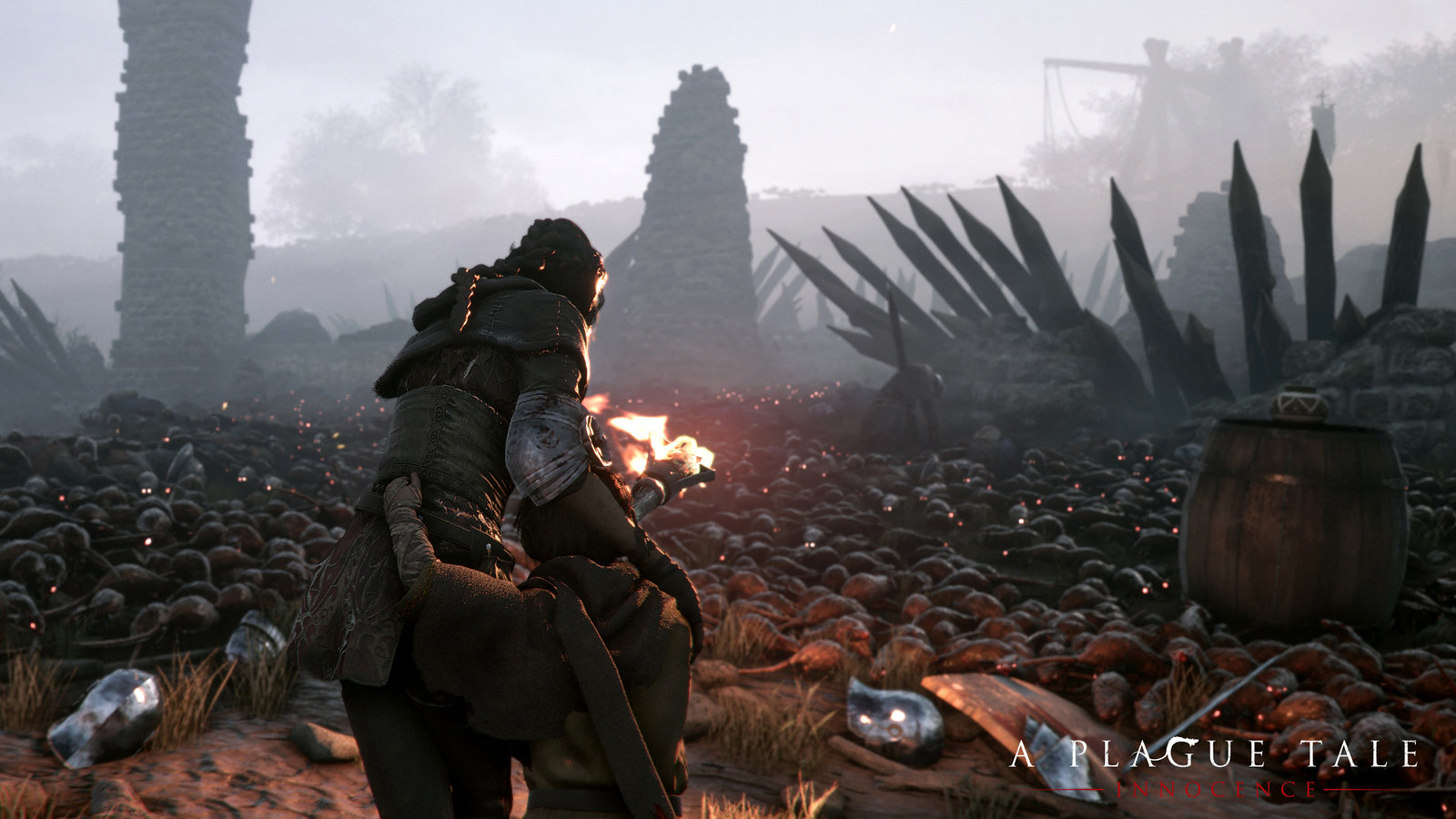A Plague Tale: Innocence Review
Blending fantasy with the Black Death, A Plague: Tale Innocence succeeds in telling the heartfelt survival story of two orphans, Amicia and Hugo. The dynamic between the siblings shines against a grim backdrop riddled with corpses, Inquisition soldiers out for blood, and thousands of Bubonic Plague-carrying rats. A Plague Tale does an admirable job of making its young protagonists appropriately vulnerable to the surrounding dangers as you move through them from a third-person perspective, but the stealth gameplay and puzzles rarely feel imaginative. As a result, the stakes of this seemingly perilous world are undercut.
The siblings had never had much of a relationship growing up as mid-14th-century French nobles, but when Amicia is suddenly forced into the role of young Hugo’s protector, they quickly need to learn to trust one another. This theme drives the story in interesting directions and is also smartly reflected through the gameplay. The majority of the 17 linear chapters see you controlling Amicia, with Hugo holding onto your hand by default. You can let go to move quicker, but if you leave him for too long he will scream and attract the attention of soldiers. Besides a few puzzles, I very rarely felt the need to let go.
Like many other “escort mission” games where you protect a smaller, weaker character, you can send Hugo to complete tasks like climbing through windows to unlock doors. Unlike most escort missions, though, Amicia and Hugo usually act as one. Hugo is helpless, but you don’t have to do anything more than hold his hand. This works on a thematic level as the story develops. I liked the simplicity from a gameplay perspective, too. Escort missions in some games can be pretty darn annoying.
A PLAGUE TALE INNOCENCE Gameplay
One of the best aspects of A Plague Tale is its world, which has an ominous emptiness to it. Well, at least when it comes to living things that aren’t overwhelming waves of terrifying rats. It’s not uncommon to come across mass graves of those who died from the Plague, and in one particularly somber sequence you actually have to walk across an entire field of bodies. Most of the living that you come across want to kill Amicia, Hugo, and various companions that help you throughout their journey. This foreboding atmosphere matches the dreariness and depravity of the areas you’ll explore, from darkened forests to abandoned castles to ghostly villages to Inquisition camps, though they all look far more dangerous and daunting than they actually are.

A Plague Tale has the illusion of being pretty open, but you’re often guided towards your next simplistic task by bits of dialogue or on screen clues. This helps to streamline the story and completely eliminates filler activities, but I found myself wanting to see more of the world and to be tested by it in more meaningful ways. A Plague Tale sometimes feels like it’s nudging you forward to safety rather than letting you get the full picture of its fascinating environments. Still, none of the levels look are feel the same and all are richly detailed. What is shown of the setting, at the very least, helps cement a tone that elevates a story that mixes real history with bits of fantasy in surprising ways. The ups and downs of Amicia and Hugo’s relationship is the star, but the world around them further heightens their already compelling tale.
While sneaking is king here, Amicia does have a weapon at her disposal: a sling that whips around and flings rocks at enemies to kill or knock them unconscious. Since it takes a moment to wind up, makes noise, and only does damage to enemies’ heads, the sling plays into the stealth emphasis. Its power is also limited by the presence of helmeted soldiers, who must first be hit with a special concoction that forces them to remove their helmet before flinging a rock. Stealth kills are possible, but they require an unlockable alchemist skill that can’t be used frequently. Sneaking past a pair of guards is always a cleaner way to go about business than taking them out.

There are a few boss fights, but they feel somewhat awkward because they abandon the puzzle-esque progression in favor of fighting in enclosed spaces. But while you should be at a severe disadvantage because of it, that’s not the case. Bosses move slowly to give you time to make the right moves, effectively nerfing themselves in the process. The exception is the final boss, a fantastic fight with ridiculously impressive animations and an interesting layer of strategy. It’s easily one of my favorite bosses of the past few years.

A Plague Tale: Innocence’s story of two orphans surviving in a world ravaged by the Black Death is compelling and the stealth gameplay that runs through it is fine-tuned, but the rat-infested world looks more dangerous than it actually is. Everything from the alchemy abilities to the layout of levels feels a bit too guided and the prevalence of crafting materials removes the need to make decisions about how you want to get past your enemies. The story stands out as a result, but there’s not a lot of freedom to experiment or consequences for reckless decisions.




